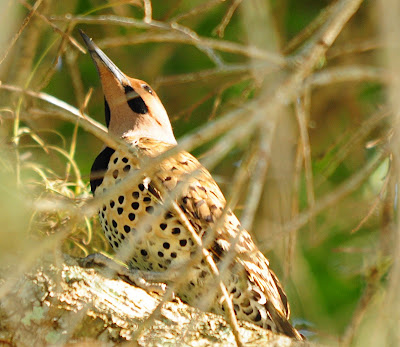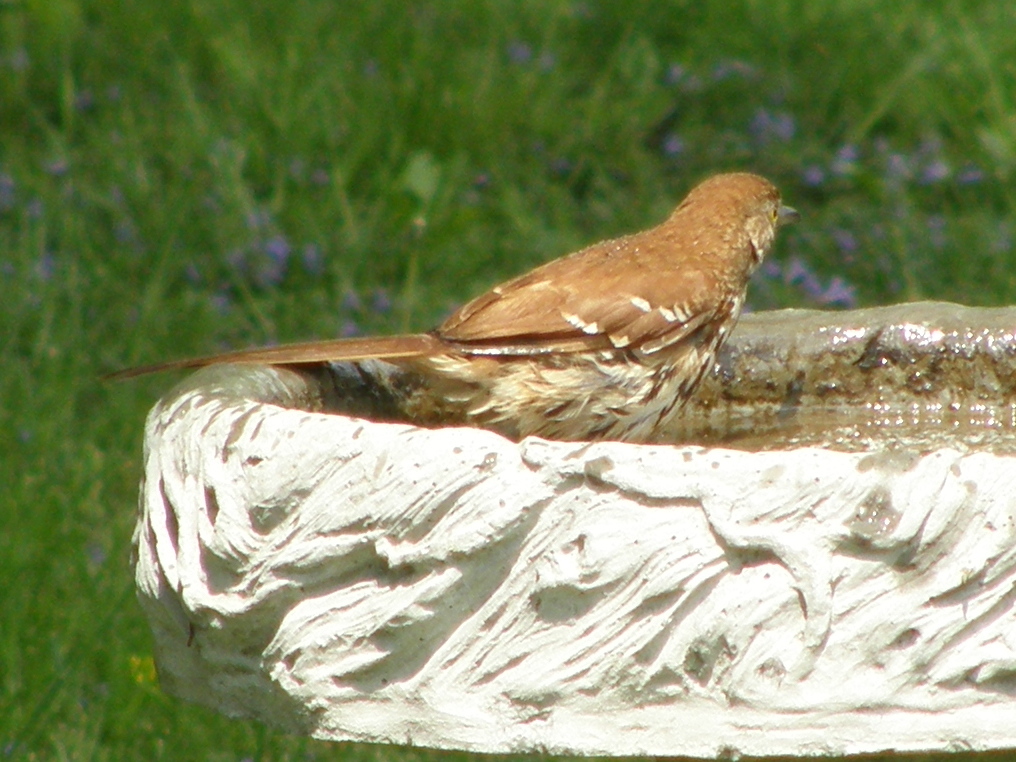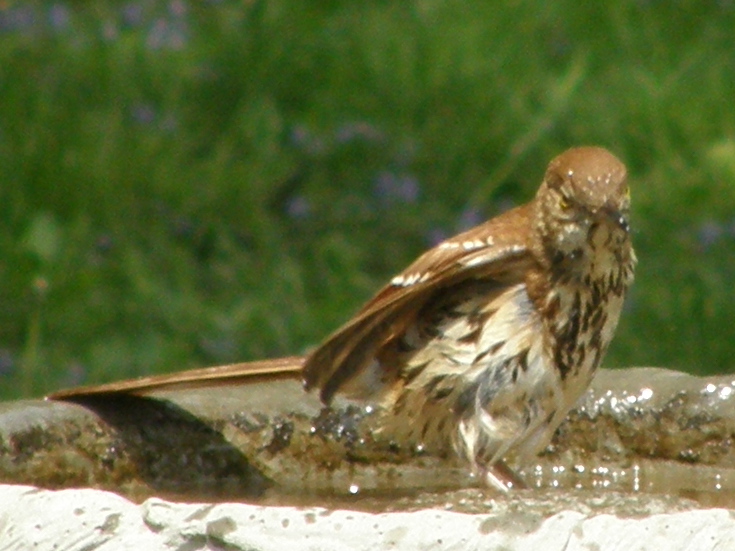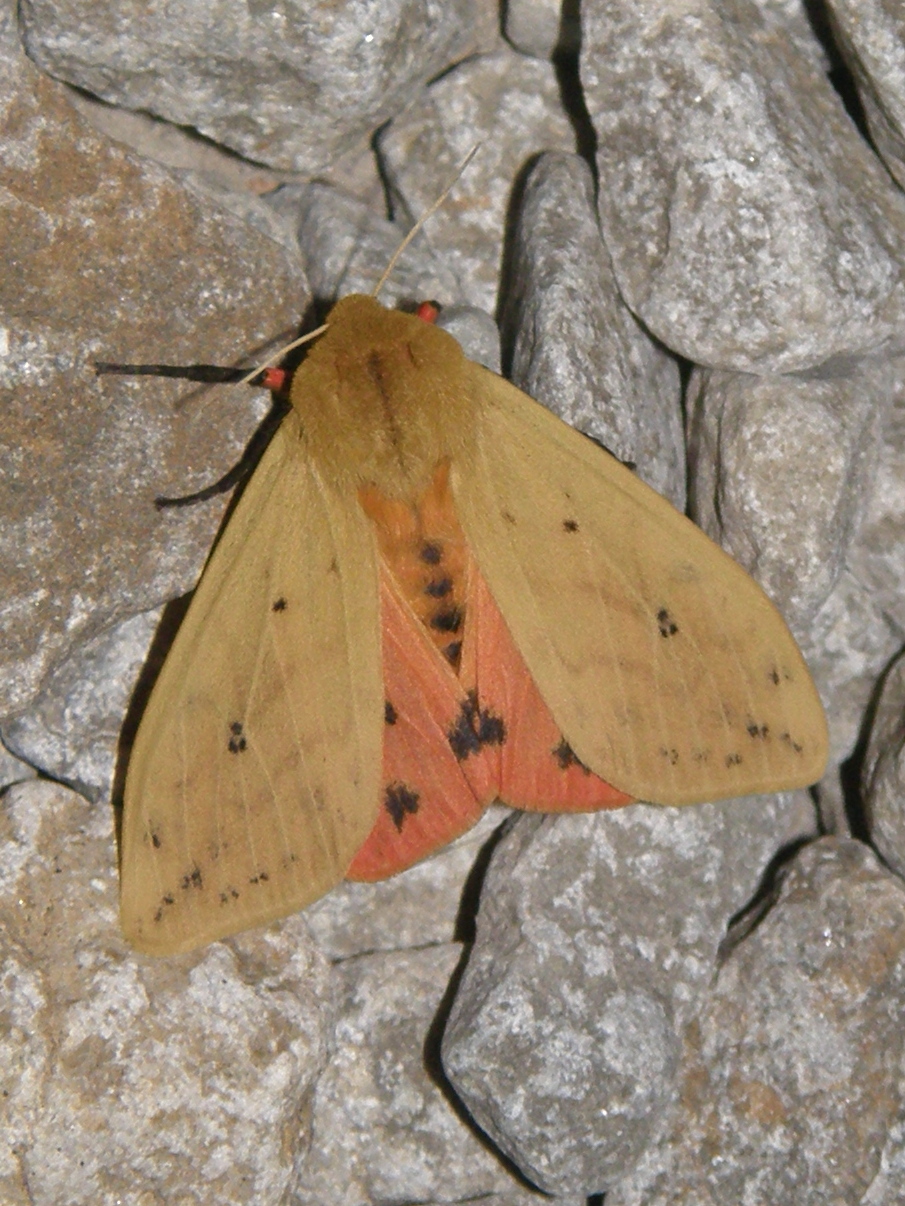 The White Ibis above was photographed at Lakes Regional Park in April 2010.
The White Ibis above was photographed at Lakes Regional Park in April 2010.My effort to observe it again at Lakes Regional Park this week was met with failure.
There was action however in the bathing area, as I now consider it, as the White Ibis in particular flew in from their roosts from the northern area of the park.
 The White Ibis above was photographed at Lakes Regional Park in April 2010.
The White Ibis above was photographed at Lakes Regional Park in April 2010.The grackles were of course active in the reeds from the start and noisy for my entire stay.
The first ibis flew in after I had settled down on the sidewalk of the park with a concern for the legs of the tripod firmly planted for the low light conditions and the slower shutter speed that would be required.
 The White Ibis with juvenile and Mottled Duck above was photographed at Lakes Regional Park in April 2010.
The White Ibis with juvenile and Mottled Duck above was photographed at Lakes Regional Park in April 2010.It wasn't soon after that I moved the gear into the grass and then the sand to be more comfortable and attempt to have a better view of the wildlife with the rising sun somewhat more directly behind me.
The White Ibis flew in from their roosts and landed in great numbers including numerous juveniles.
 The Mottled Duck above was photographed at Lakes Regional Park in April 2010.
The Mottled Duck above was photographed at Lakes Regional Park in April 2010.I noticed in almost every case that the first thing the ibis did was to take a drink of water after arriving on the scene.
There was a lot of opportunity for me to practice capturing images of birds in flight.
 The Mottled Duck above was photographed at Lakes Regional Park in April 2010.
The Mottled Duck above was photographed at Lakes Regional Park in April 2010.In addition to the ibis, I also observed a pair of Tricolored Heron, one seemingly much smaller than the other.
An Osprey was seen overhead being chased by a grackle.
 The White Ibis above was photographed at Lakes Regional Park in April 2010.
The White Ibis above was photographed at Lakes Regional Park in April 2010.I believe I made my first sighting of four Least Bitterns, two pairs in flight, but was unable to photograph them.
A Swallow-tailed Kite was also in the area and offered me the opportunity for a few shots as it flew from the west and then north.
 The Common Moorhen above was photographed at Lakes Regional Park in April 2010.
The Common Moorhen above was photographed at Lakes Regional Park in April 2010.Behind me at one point, a pair of Red-bellied Woodpecker were quite vocal and hide and seek in a palm tree.
Four Mottled Duck took claim to some space in the shallow water and seemed to be more dominant of the territory than the ibis.
 The Swallow-tailed Kite above was photographed at Lakes Regional Park in April 2010.
The Swallow-tailed Kite above was photographed at Lakes Regional Park in April 2010.There was also a Least Sandpiper very seemingly out of place in all the activity which I'm surprised by as this species is considered a winter visitor to my area.
At one point the bird settled down in a clump of grass in a seemingly nesting behavior.
 The Least Sandpiper above was photographed at Lakes Regional Park in April 2010.
The Least Sandpiper above was photographed at Lakes Regional Park in April 2010.A Common Moorhen was also making its rounds and occasionally made its distinctive call.
The Great Blue Heron arrived on the scene to ply its trade in the reeds and was not well received by the grackles that harassed it.
 The Red-bellied Woodpecker above was photographed at Lakes Regional Park in April 2010.
The Red-bellied Woodpecker above was photographed at Lakes Regional Park in April 2010.Additionally observed in flight at Lakes Park were Great Egret, Double-crested Cormorant, Anhinga, and Snowy Egret.
A Little Blue Heron with great color in its lores was the last to arrive at the time I was speaking with Bob Chamberlain.
 The Tricolored Heron above was photographed at Lakes Regional Park in April 2010.
The Tricolored Heron above was photographed at Lakes Regional Park in April 2010.I found out that Bob is a member of the Fort Myers camera club.
Bob had asked me if I knew what PSA was and I have to admit I didn't have an immediate answer.
 Bob Chamberlain above was photographed at Lakes Regional Park in April 2010.
Bob Chamberlain above was photographed at Lakes Regional Park in April 2010.He was referring to the Photography Society of America of course while I had visualized the PRE and PSE icons fresh to my computer with the installation of Photoshop Elements 8.0.
I later found out after visiting the camera club's website that Bob is a PSA representative.
 The Common Grackle juvenile with Great Blue Heron above was photographed at Lakes Regional Park in April 2010.
The Common Grackle juvenile with Great Blue Heron above was photographed at Lakes Regional Park in April 2010.I also had the pleasure of meeting Bob's wife Bonnie who told me of the delicacies she prepares for the camera club's meetings.
I had the great fortune of hearing from Hemant Kishan, a member of PSA, this past week advising me of his sighting of the Scissor-tailed Flycatcher near STA-5.
 The White Ibis above was photographed at Lakes Regional Park in April 2010.
The White Ibis above was photographed at Lakes Regional Park in April 2010.Hemant also told me that he was able to see the Burrowing Owl at Cape Coral and has images of this species and the flycatcher he has recently photographed which can be accessed here.
I've had the opportunity to use Energizer's latest rechargeable batteries these past weeks and find them inferior to the 2450 mHa available as the flash doesn't seem to cycle as quickly as the 2450 version.
 The Mottled Duck above was photographed at Lakes Regional Park in April 2010.
The Mottled Duck above was photographed at Lakes Regional Park in April 2010.The newer version is advertised to be able to be recharged more than others of its type.
I've had the opportunity to see the video recording of the mating Burrowing Owls I made last week and as feared the quality is not what I had hoped.
 The White Ibis juvenile above was photographed at Lakes Regional Park in April 2010.
The White Ibis juvenile above was photographed at Lakes Regional Park in April 2010.I will nonetheless attempt to have it available to view at YouTube which is another project I am excited to learn about.
Among the most interesting and must see wildlife videos I've seen, titled "Battle at Kruger," is one available to view at Ken Conger's wildlife blog and can be accessed here, and be sure to see it full screen for best viewing.
 The White Ibis above was photographed at Lakes Regional Park in April 2010.
The White Ibis above was photographed at Lakes Regional Park in April 2010.The title of this post is the executive branch's response time to the ecological disaster in the making in the Gulf of Mexico.
The potential impact on Florida's west coast and panhandle is quite chilling to fathom.
 The Great Egret above was photographed at Lakes Regional Park in April 2010.
The Great Egret above was photographed at Lakes Regional Park in April 2010.Texas, Mississippi, and Louisiana will certainly be adversely impacted as well.































